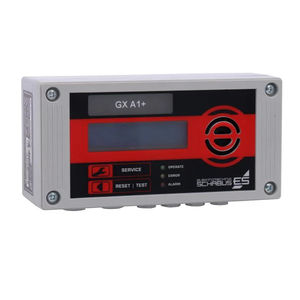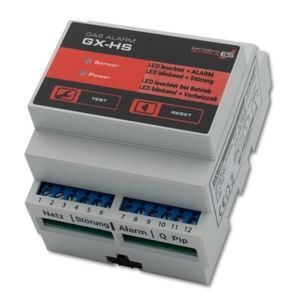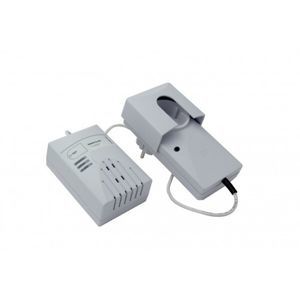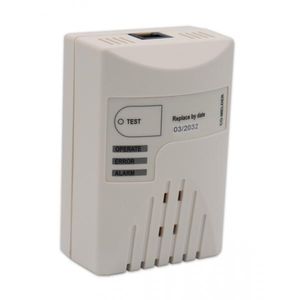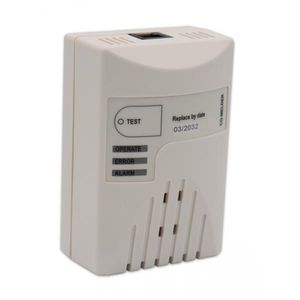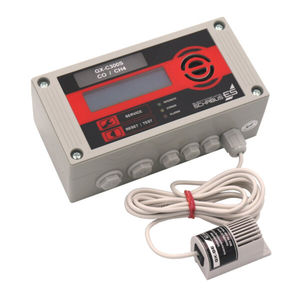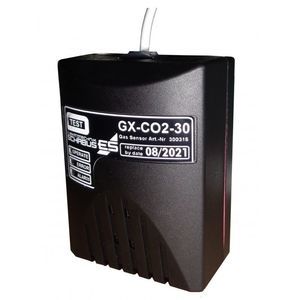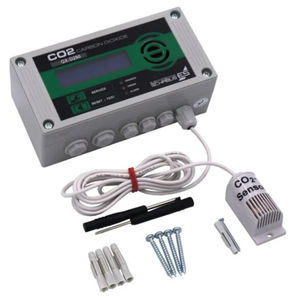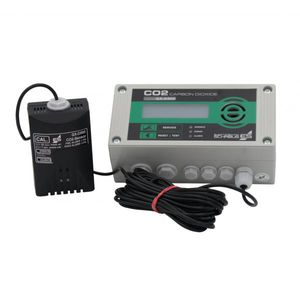
- Environment - Health - Safety
- Building Security and Machine Safety
- Sound warning device
- Elektrotechnik Schabus
Sound warning device GX-D1
Add to favorites
Compare this product
Characteristics
- Options
- sound
Description
The plug-in CO2 warning device with internal sensor for carbon dioxide is plugged into an upper (tolerant) or lower (sensitive) socket depending on the desired sensitivity, is ready for operation after 3 minutes preheating time and warns when half the MAC (2500 ppm) is reached with a loud alarm tone and red flashing LED.
Possible applications
Monitoring of medical practices, waiting rooms, open-plan offices, workshops, etc.
for all rooms where people spend long periods of time on a regular basis
by the exclus. acoust. Warning ideal for waiting rooms or the like where a visual warning could irritate
Reliable reminder to air regularly
DESCRIPTION
D-Series alarms detect elevated CO2 levels in indoor spaces where large numbers of people are regularly present. Typically, these are classrooms, lecture halls, meeting rooms, but also production facilities, open-plan offices and, in general, function rooms.
1400 ppm CO2 in the room air is already considered "very bad air", the maximum workplace concentration MAK in Germany is 5000 ppm, the GX-D1 therefore warns with its loud signal tone already from 2500 ppm for extensive ventilation of the room.
If you have to breathe bad and stale air all the time, you get tired and lose your ability to perform and concentrate. This is particularly noticeable when learning and working.
The immune system is also measurably weakened, which can certainly be seen in the increased number of sick days in open-plan offices and classrooms.
It is the same with aerosols, which cannot be detected directly, but increased CO2 levels are also a measure of virus-laden air.
The GX-D1 cannot prevent infection, but it can at least significantly reduce
Other Elektrotechnik Schabus products
WARNING SYSTEMS GAS | SMOKE
Related Searches
- Beacon light
- LED warning light
- DC warning light
- 12 Vdc warning light
- Warning light with audio signal
- Alarm monitoring device
- Blinking warning light
- Gas monitoring device
- Wall-mounted beacon light
- Chemical monitoring system
- Multifunction beacon light
- Traffic light
- LED traffic light
- IP monitoring device
- Device monitoring device
- Powerful beacon
- Warning device
- IP65 monitoring device
- Safety monitoring device
- Sound warning device
*Prices are pre-tax. They exclude delivery charges and customs duties and do not include additional charges for installation or activation options. Prices are indicative only and may vary by country, with changes to the cost of raw materials and exchange rates.


